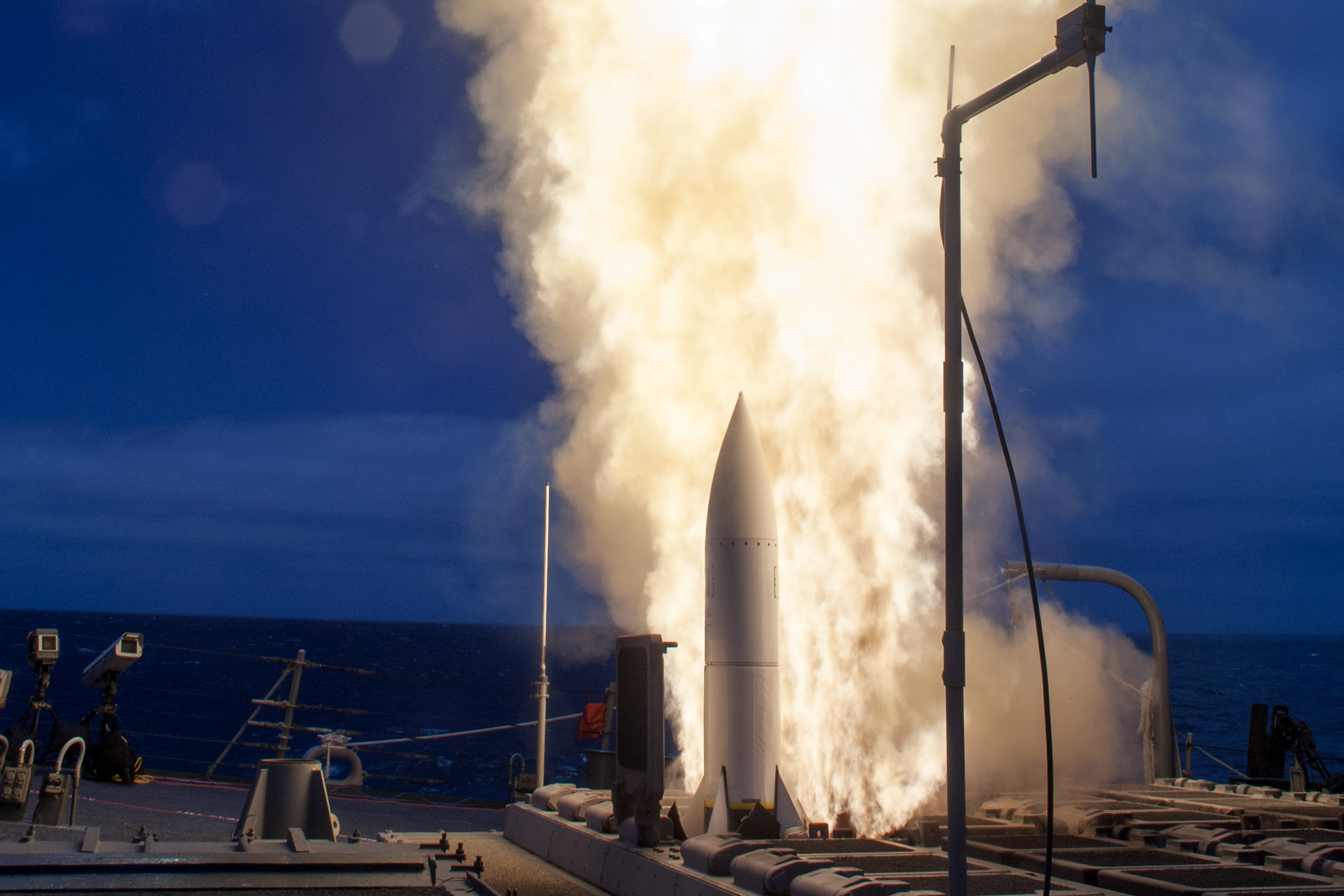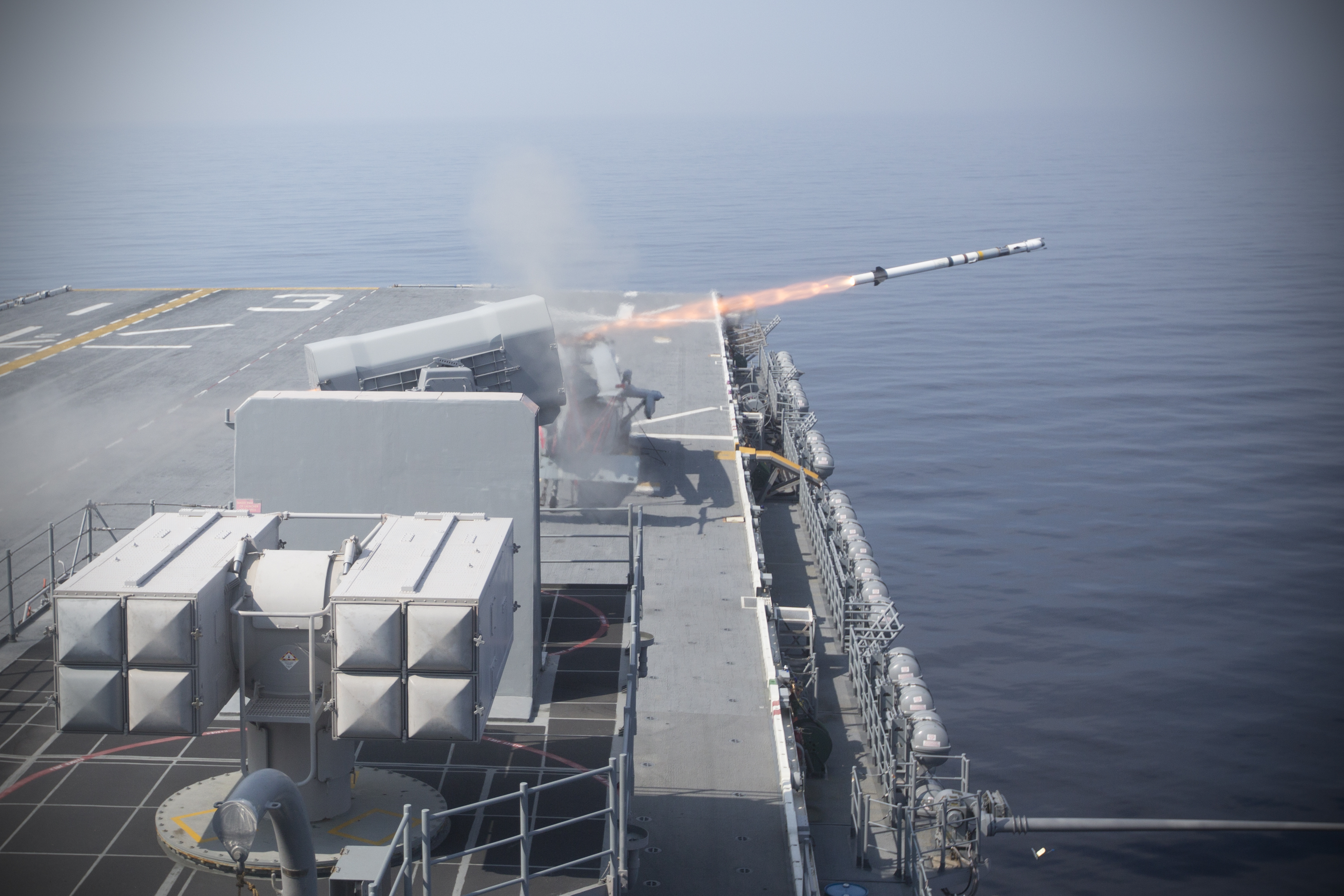
WASHINGTON NAVY YARD – The Program Executive Office for Integration Combat Systems will release a first-ever 30-Year Combat Power Plan to accompany the 30-Year Shipbuilding Plan in the spring, outlining how the Navy will outfit its platforms and network its sensors to keep up with the threat environment and technological advances.
The 30-year plan will help align various communities in the Navy, as well as industry and lawmakers, to encourage for the right research and development, the right systems engineering and the right investments in people and infrastructure, PEO IWS Rear Adm. Jon Hill told USNI News in a Nov. 24 interview.
Trying to plan for 30 years out is a challenge, he said. Satellites and space will become more important, but it is unclear how the Navy could best leverage it. Cyber will be important, but only time will tell how much it will affect defensive and offensive operations. Directed energy and supersonic weapons could eliminate the need for dangerous propellants on ships, but only if researchers can advance current technology so that lasers become powerful enough and hyper velocity weapons fast enough.
What is certain, Hill said, is two things: the Navy needs to increase its offensive capability, and it needs to effectively operate an entire netted force rather than just individual ships and planes. Both those future requirements will necessitate a new way of thinking, and for that reason the timing is right for a 30-year combat power plan.

“I used to always say it’s about the fighting integer. And so what we mean when we say that is, that ship has to do everything it needs to do when it goes on station, and we should never build a ship that is so reliant on offboard sensors, for example, that if those offboard sensors aren’t there the ship’s a tugboat,” Hill said.
“So we spent a lot of time at that fighting integer unit level over the last few decades. That’s where we’ve been because we want the most powerful warships on the planet.”
But today, he said, “now we recognize that those warships are going to operate in a force, whether it is with a carrier strike group, if it’s in a surface action group, if it’s an undersea warfare SAG that’s heading out and breaking away from the carrier strike group. And so they have to have some force-level engineering.”
Force-level engineering takes a deliberate effort to overcome the stovepipes built into military acquisition, Hill said, and the Navy didn’t always have a good track record of achieving that.
“We got the wakeup call a few years ago when we were putting Cooperative Engagement [Capability] to sea, and the big term ‘interoperability’ rose from that – oh my god, the track systems are confusing each other,” he said, recalling the reaction to CEC testing.
“That’s absolutely right, because that wasn’t done at a force level, we didn’t engineer at the force level. What we did differently with NIFC-CA (Naval Integrated Fire Control Counter-Air) is we engineered at the force level. We said, we have aviation aspects here, we have offboard sensors, we have a long-range missile, we have organic capability on the ship. The ship can see things all on its own, but it’s got the ability to exchange data with other ships, exchange data with other assets offboard. And we engineered that from a force perspective, so when we put it to sea, we didn’t have a big ‘ah ha’ moment where the track systems didn’t talk to each other.
“It’s almost inherent in the way you do it, because every radar comes with its own track manager in it, and then you have a track manager within a combat system, and if you don’t engineer them to operate together you’re going to have timing and sequence issues,” Hill continued.
“And that has brought us to our knees because we were so focused in on the individual weapon or radar for years. That’s the way you’re organized, so you have to power through it and engineer at the force level.”
PEO IWS has previously put out roadmaps before, but they were very narrow in focus – a radar roadmap, a missile roadmap, a directed energy roadmap. Hill said the combat power plan would align the entire research and acquisition community to a common vision for the near, mid and far term.
The roadmap will also help identify opportunities to insert offensive capabilities into existing ships and systems.
“Over the last 10 years or so we’ve gotten very defensive. In fact, if you go look at most of our programs, it’s about defending the carrier. Most of our weapons are air defense, they’re self-defense, ballistic missile defense. Where is the offensive fire power?” Hill said.
“So we did a demo last year, we brought in a foreign-built missile and put it on [the Littoral Combat Ship] and did a long-range engagement with that. We’re taking existing weapons that we have today that are in production and we’re moving forward in some tests in the future where we’re going to reach out and touch other things by being very offensive in our mindset.
“And it does make you think differently,” he said, which is why having a formal roadmap is so important.
“So you can take a RAM Block II close-in self-defense weapon, or you can take a SEWIP, which is about defending the ship, and you can say, well how can I use that technology to be offensive? And it turns out that’s not all that hard to do if you just put your thinking cap on. And we have some great engineers that are looking at those options. And again not forgetting that force level piece – in order for us to think about how we would use electronic warfare, radars, guns and missiles in an offensive role, if you do it at that force level it’s pretty powerful.”
Hill said there is already some very good work happening in PEO IWS to increase the capability of existing weapons systems.

For example, he said, “SeaRAM: great capability, it’s all in one package. Could you really increase the capability of a system like that if you had it being cued by the combat system on a ship, or had it cued by the combat system on another ship? Or if you had initialization of the missile coming from weapons control within the combat system, either on your ship or a sister ship? And so we’re thinking through how you can increase the capability of really a nice little weapons system. How do you now take that and do something different with it?”
He said the roadmap may help engineers throughout the Navy focus on these types of opportunities as new systems – the F-35 Joint Strike Fighter, solid-state radars, hyper velocity weapons and more – enter the fleet and change how disparate systems are able to operate together.
Hill, who took over the PEO in July 2014, said that as he was approaching his first anniversary at the job he got to thinking about the future of integrated warfare systems and decided to organize his program managers, senior executives and other Navy stakeholders to begin working on the roadmap. They compiled existing data; discussed the future operating environment, drivers of and challenges to advances in technology, and what missions the Navy may need to tackle in the future; and broke into working groups to being writing up their findings. Hill said there is still some work to go, but the group has a good idea of what the next five years will look like, what opportunities there may be in the 10-year range and what overarching “guide stars” they should aim for in the 30-year timeframe.
“The 30-year shipbuilding plan has been very effective in helping the industrial base for shipbuilding predict where they’re going and understand where future competitions are, numbers of ships. It helps Congress understand what our required force structure is,” he said
“What our contribution has to be is, what do we see as the growing and evolving threat, what capabilities will be on those ships, and how does that affect the force structure?”





